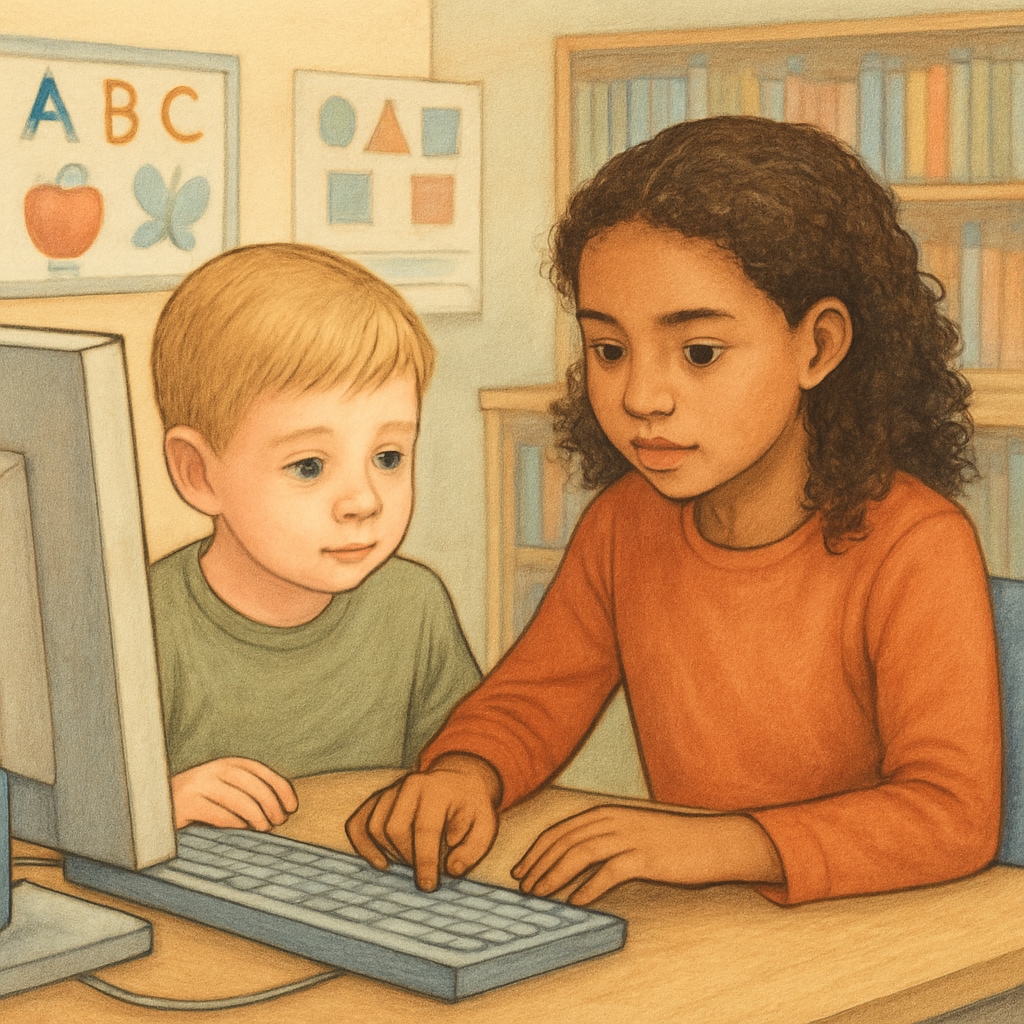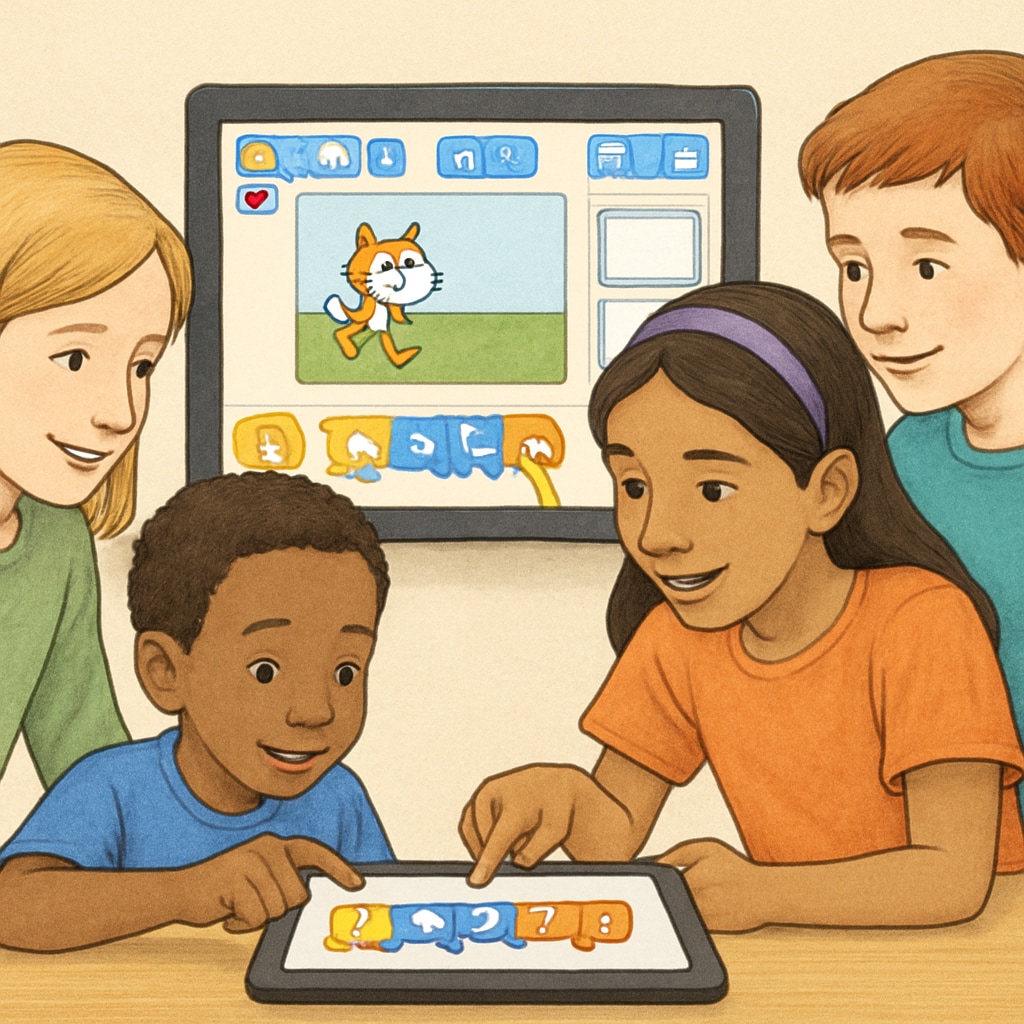Designing a meaningful kindergarten-fourth grade partner computer activity can be a transformative experience for students of both age groups. These activities not only bridge the gap between different developmental stages but also cultivate essential skills such as teamwork, problem-solving, and adaptability. By creating structured yet flexible programs, educators can ensure the activities are engaging while accommodating varying literacy and technical skill levels. This article provides actionable suggestions for educators to implement successful cross-age computer activities that spark curiosity and collaboration.
Why Cross-Age Partner Activities Matter
Partnering younger kindergarten students with older fourth graders offers numerous educational and social benefits. For younger children, the presence of a more experienced partner can boost confidence and provide guidance. Older students, on the other hand, develop leadership skills and empathy while reinforcing their own knowledge through teaching. Additionally, cross-age partnerships encourage a sense of community within schools, as students learn to appreciate and celebrate differences in abilities and experiences.
Studies, such as those highlighted by the Education Endowment Foundation, show that peer-assisted learning strategies can significantly enhance outcomes in literacy and numeracy. When technology is integrated into these partnerships, the potential for creativity and engagement multiplies.

Key Considerations for Activity Design
When designing kindergarten-fourth grade partner computer activities, educators must consider several factors to ensure success:
- Skill Level Differences: Kindergarteners may have limited reading and typing abilities, while fourth graders are more advanced. Activities should balance these disparities.
- Engagement: Choose interactive and visually appealing software to keep both age groups interested.
- Goals: Define clear learning objectives, such as developing digital literacy, enhancing creativity, or solving problems collaboratively.
- Roles and Responsibilities: Assign roles that play to each age group’s strengths, such as having fourth graders guide while kindergarteners explore.
By keeping these considerations in mind, educators can create activities that are both effective and enjoyable for students of all ages.
Sample Activity Ideas
Here are some practical ideas for kindergarten-fourth grade partner computer activities:
- Interactive Story Creation: Use platforms like StoryJumper or Google Slides. Fourth graders can help type and guide the story’s structure, while kindergarteners contribute illustrations and ideas.
- Educational Games: Pair students to play cooperative games on websites like ABCmouse or Kahoot. Fourth graders can help navigate and explain instructions while both students participate in gameplay.
- Digital Art Projects: Use tools like Paint 3D or Canva for collaborative art. Kindergarteners can choose colors and shapes, while fourth graders handle more technical aspects like layering or exporting files.
- Simple Coding Activities: Platforms like ScratchJr allow both age groups to create animations. Fourth graders can guide coding steps, while kindergarteners add creative elements like characters or sound effects.

Tips for Successful Implementation
To ensure a smooth and productive experience, follow these tips:
- Provide Training: Offer a brief tutorial for fourth graders on how to effectively mentor younger students.
- Monitor Progress: Circulate the room to assist with challenges and ensure partnerships are functioning well.
- Celebrate Achievements: Showcase completed projects during a class presentation or school event to encourage pride and motivation.
- Gather Feedback: Ask both students and teachers for feedback to refine future activities.
Through thoughtful planning and support, these activities can become a cornerstone of a school’s collaborative learning environment.
Conclusion
Incorporating kindergarten-fourth grade partner computer activities into the curriculum fosters a culture of mutual respect, creativity, and lifelong learning. By designing activities that bridge age and skill gaps, educators can inspire students to work together and achieve more than they could individually. Whether through storytelling, gaming, or coding, these partnerships demonstrate the power of collaboration in education.
For additional insights on cross-age learning, visit Britannica’s article on peer teaching.


